University Historical Timeline
Cover Story
As years unfold at SFA
1910s
State Normal School Board of Regents chose Nacogdoches as site for new Normal college in July
The citizens of Nacogdoches assembled their case for being selected as the site for the new East Texas Normal school scheduled to be "east of the 96th meridian" in the brochure "Twenty-Three Reasons Why." SFA was chartered by the Texas Legislature. Nacogdoches was selected as its location and the appropriations bill for funding was signed; however, World War I delayed the process.

SFA campus land purchased for $20,050
The title for the six separate tracts of land comprising SFA's original 208 acres was transferred to the state.

Birdwell appointed first president of Stephen F. Austin Normal School
Dr. Alton W. Birdwell was dean of faculty at Southwest Texas Normal School, now Texas State University, in San Marcos when appointed. He arrived in Nacogdoches in August 1922 and opened SFA on his 53rd birthday, Sept. 18, 1923.
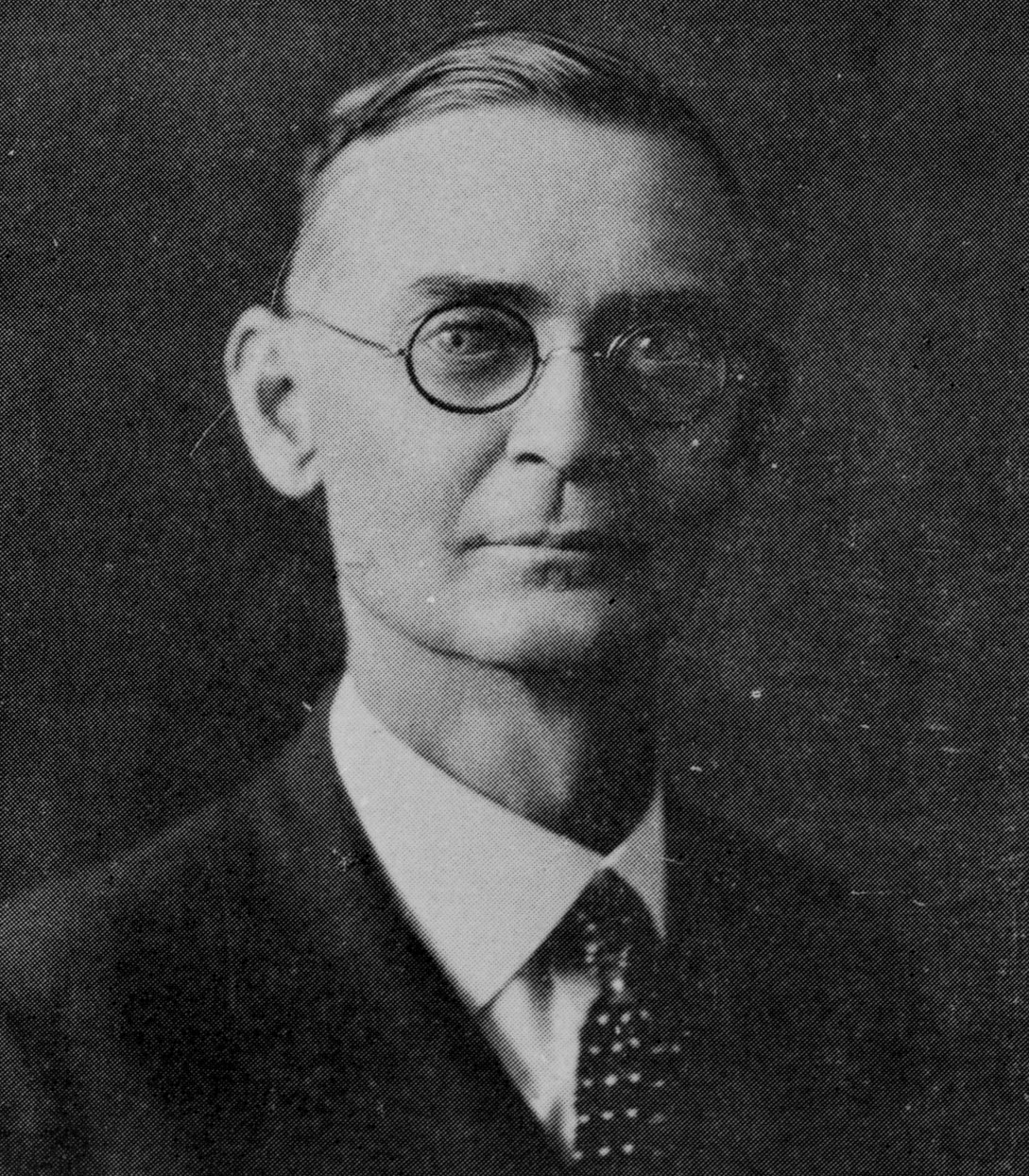
1920s
Student organizations were founded
The first Lumberjack Band was directed by J.T. Cox, and the Lumberjackettes served as the first pep club. The Sawyers, now the Delta Sigma Phi fraternity, promoted school spirit by pounding axe handles in unison on the floor during athletic events. To help women socialize, the Pine Burrs, now the Chi Omega sorority, and the Amities were formed. The Karle Wilson Baker Dramatic Club was organized in honor of the nationally known poet and SFA English professor, and The Royal Order of Potential Debunkers lasted a year (1929-30). Music clubs and literary societies were active, while other social groups formed at the boarding houses where students lived.

The first Lumberjack Band First classes held
On Sept. 18, Stephen F. Austin State Teachers College and its Demonstration School opened for classes at the Nacogdoches High School campus on Washington Square since the Austin Building was still under construction. The Chamber of Commerce built a temporary administration building on the square known as "The Shack", which housed administrative offices.
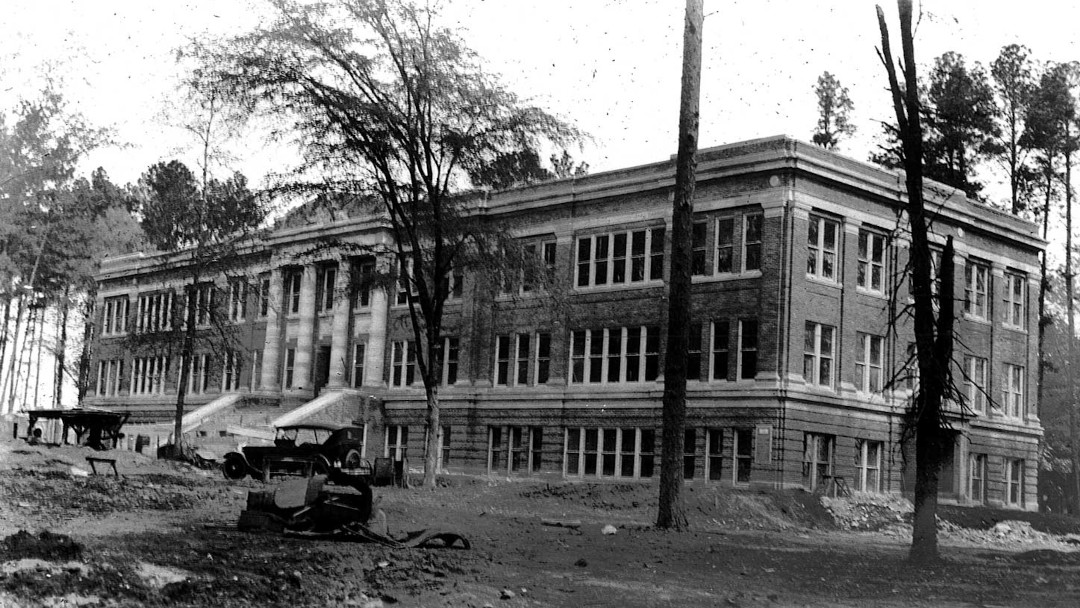
Austin building under construction in 1923 Early traditions were established
Royal purple and gold were selected as the school colors, and "Qui Vive," or "On the Alert," was chosen as the school motto. "The Pine Tree Hymn," SFA's first school song, was written by Karle Wilson Baker. The Lumberjack mascot was selected by popular vote at a special student assembly of faculty and students. Suggested by Dr. T.E. Ferguson, Lumberjacks beat out Pinecones in a spirit rally to decide the mascot. Yell Leaders boosted team spirit.

Dr. T.E. Ferguson SFA Athletics launched
Coach Bob Shelton directed the athletics program and became known as the "father of SFA Athletics." Shelton led the first football team to a win over Sam Houston Normal Institute in Huntsville. The rivalry, which became known as the Battle of the Piney Woods, continued until 2022, when Sam Houston joined Conference USA.
Letter Men Association established
The Letter Men Association was established by SFA Athletics program director and football coach Bob Shelton. Student-athlete inductees were easily identified on campus wearing traditional letter jackets with the letter "T," which stood for Texas. It continues today as the J Association and aims to keep all former student-athletes, coaches, trainers and leaders involved and connected with the SFA Athletics family.
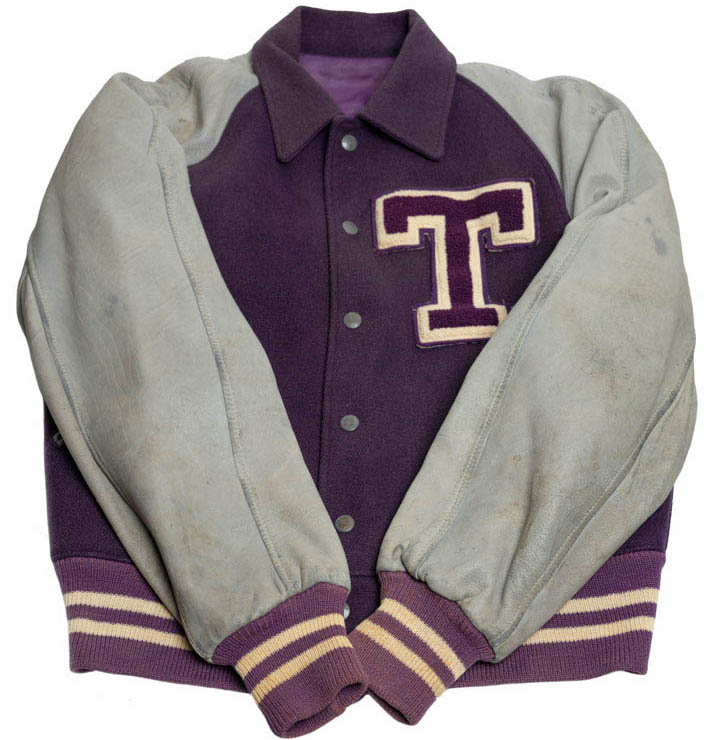
Demonstration School offered student-teachers transformative experiences
The school, which existed until 1950, served two very important purposes: it offered elementary children an education with some of the most knowledgeable teachers in the profession and provided SFA student-teacers with an opportunity to gain valuable experience.
Vista Drive opened and student publications were established
Since the completion of the Austin Building in 1924, Vista Drive has provided a unique view of the campus. The first day of classes on the new campus was officially May 1, and the first edition of the student newspaper, The Pine Log, was distributed on May 31. The first Stone Fort yearbook was published.

Austin Building opened
The Austin Building opened May 1, costing a total of $129,590 to build.
Aikman Gymnasium completed
Aikman Gymnasium was completed and named after prominent Nacogdoches businessman and manufacturer Frank Speir Aikman, who donated $12,000 for its construction.

Women's Athletic Association established
The largest group on campus at the time, the WAA was established "to promote all physical activities and to encourage a spirit of good sportsmanship, loyalty and honor." As Title IX was enacted in the 1970s, women's sports took on a bigger role at SFA as the Ladyjacks basketball team began to make appearances at the NCAA tournament and later on when the bowling team earned national championships in the 2010s.

SFA presented its first graduating class
SFA's first graduate, M.D. Warren of San Augustine, received a Bachelor of Science in history in May by taking an overload of classes, but the other 10 members of his class participated in a ceremony in August.
Rusk Building was completed
The Rusk Building was built on part of the homestead land of Thomas Jefferson Rusk, who served as a politician and military leader for the Republic of Texas as well as one of the first U.S. Texas senators from 1846 to 1857.

SFA Alumni Association established
Twenty-four former students, who gathered in the Austin Building Nov. 29, established an alumni organization and elected officers.
1930s
First on-campus dormitory opened
Named in honor of John Harold Wisely, Wisely Hall became the first on-campus dormitory. Wisely served as SFA's business manager and head of the former Department of Commerce.

First fall homecoming held
After being held in the spring since 1930, Homecoming became an annual fall event. The first fall Homecoming was held by the Ex-Students Association Nov. 22-23. Everyone was invited to a morning parade, which wound from Mound Street through downtown Nacogdoches, and to the afternoon football game against Sam Houston State University.
Stone Fort Museum moved to SFA
The Stone Fort Museum replica was moved to the SFA campus by the Texas Centennial Commission. It is a replica of the late 1700s Spanish colonial-style home of Antonio Gil Y'Barbo that was located on the Camino Real in Nacogdoches.

Stone Fort Museum dedication day Science building opened
It was renamed the Lehmann Chemistry Building in 2017 in honor of Robert and Kathy Lehmann, who contributed to student scholarships and to the advancement of university programs.

Gibbs Hall opened
The first women's residence hall on campus, Gibbs Hall was named after SFA's first art teacher, Eleanor H. Gibbs.

1940s
New president was named
Dr. Paul L. Boynton was named the second president of SFA May 14.

World War II continued to impact male enrollment
By this time, many male students at SFA had left to serve in the war effort. Football was on hiatus. SFA had an all-girl band. To boost SFA's declining enrollment numbers, Dr. Paul Boynton, second president of SFA, established the first Women's Army Auxiliary Corps training school in the nation. Called Army Administration School WAAC No. 1, the center trained women for auxiliary noncombat duty. Approximately 2,000 WAACs graduated from the training center by the time it was discontinued in 1944.

WAACs on the steps of the Austin Building in 1943 Experimental Forest established
The Stephen F. Austin Experimental Forest was established by an act of Congress and measures more than 2,500 acres. It is still in use for recreation, forestry and wildlife management research and is the only one of its kind in Texas.

Community voted for stadium
In February, the citizens of Nacogdoches voted in favor of the issuance of $60,000 in bonds to build a stadium and field house as the first part of a community recreation center. At the same time, there was a petition to name it Memorial Stadium in honor of the men and women of Nacogdoches County and SFA students who lost their lives in World War II.

Forestry department formed
The forestry department was organized under the direction of W.R. Owens, and the Sylvans Professional Forestry Students Club officially began on campus with the adoption of its constitution Dec. 17.

First Lumberjack Day is held
The inaugural Lumberjack Day was established by a proclamation of the student body president. Students on campus were expected to wear blue jeans, overalls, plaid shirts and boots. The tradition continues annually.

Student Union Building opened
The building was under the management of Henrietta Baker and contained a recreation room, ballroom, lunch room, student offices, student conference room, book store and post office.
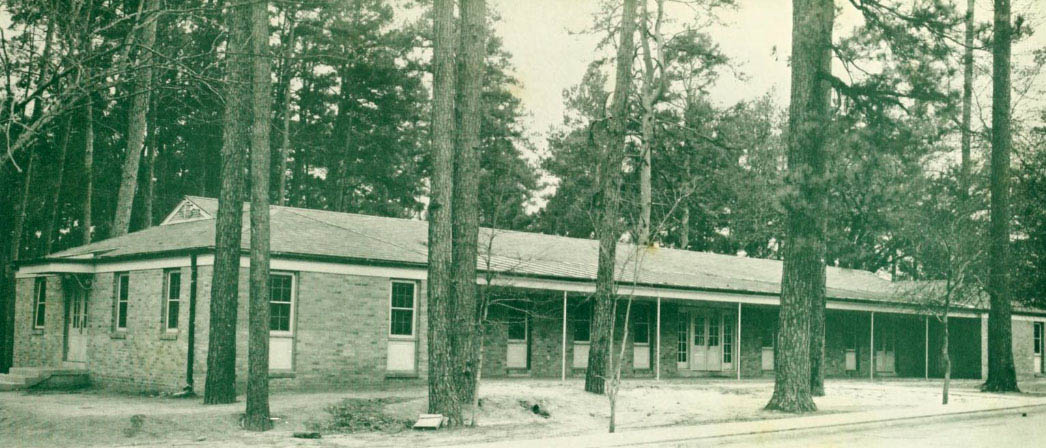
SFA's first renaming
Stephen F. Austin State Teachers College was renamed to Stephen F. Austin State College.
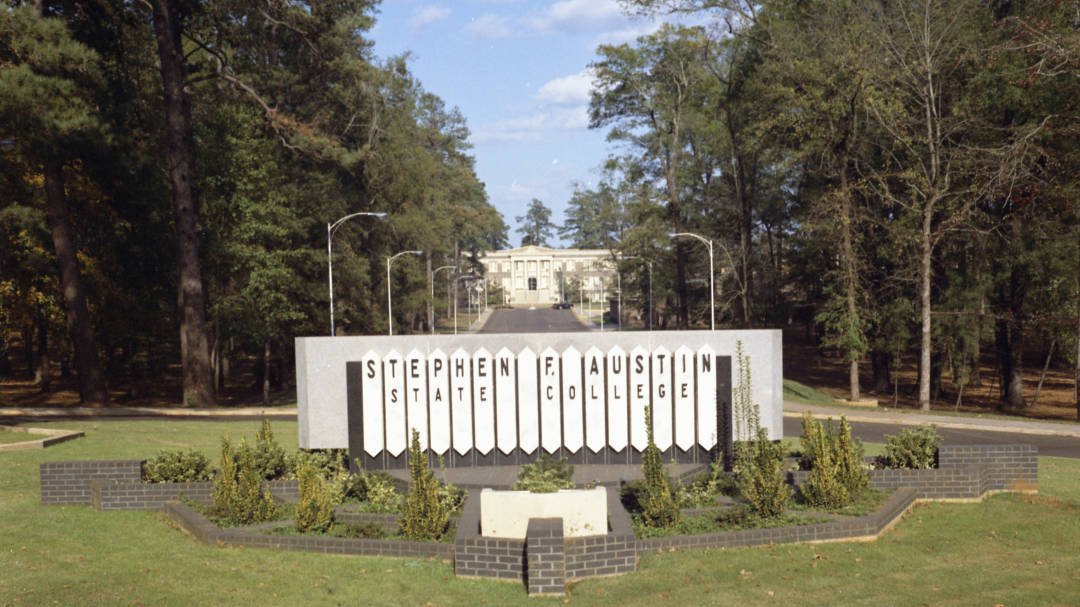
1950s
SFA expanded after the war
Throughout the decade, the campus experienced a construction boom to keep up with the post-war enrollment from returning veterans.
Mays Hall opened
Mays Hall opened and was one of the first residence halls on the south side of campus. It was named in honor of Ruth E. Mays, SFA's first dean of women.

Men's gymnasium opened
SFA opened the men's gymnasium, now known as Shelton Gymnasium. The gym was named after SFA Athletics program director and football coach Bob Shelton, known as the "father of SFA Athletics."

Construction begins on Boynton Library and "The Units"
Originally called the Boynton Library, construction began on what is now called the Boynton Building. The first of three Units were built at the corner of East College and Raguet streets. Construction on the second building began in 1956, and the third was completed in 1959.

The Units Construction for the Griffith Fine Arts Building
Construction began in July after Temple Associates of Diboll was awarded the construction contract for the $1.5 million auditorium and fine arts building. The building was completely transformed between 2020-23, reopening fall 2023 after extensive upgrades and additions.

Third university president named
On Nov. 1, Dr. Ralph W. Steen was named the third president of Stephen F. Austin State College. During Steen's tenure, SFA grew from a college of fewer than 2,000 students to the status of university with more than 11,000 students enrolled.
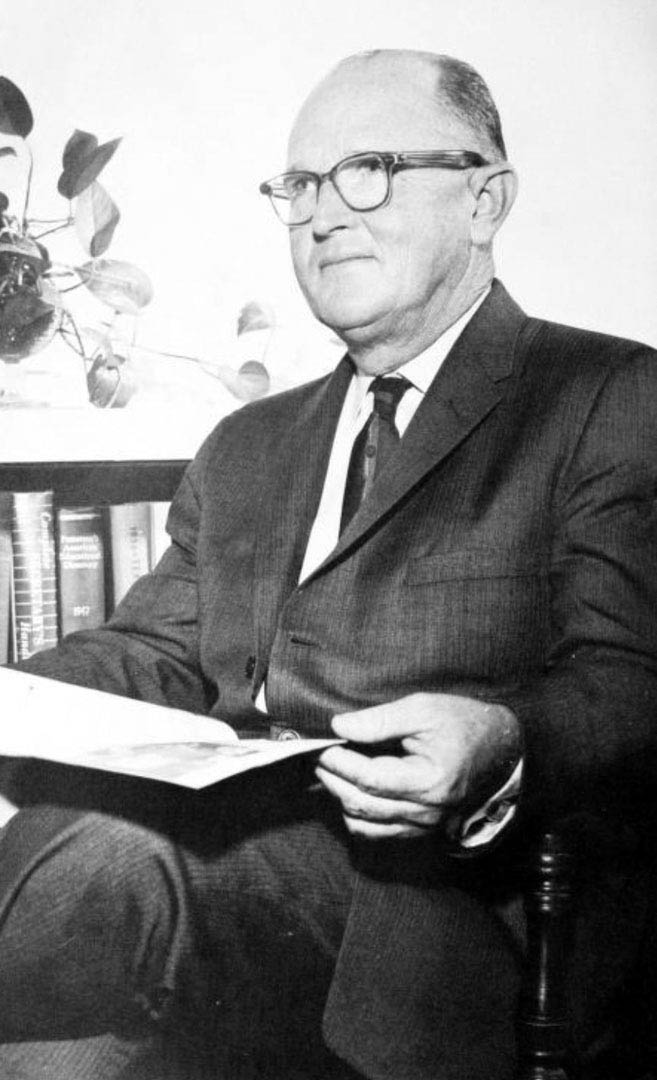
SFA Sylvans participated in first Southern Forestry Conclave
The Association of Southern Forestry Clubs was organized by the University of Georgia. The SFA Sylvans were a part of the first ASFC Conclaves.
Don't step on the seal
When the Fine Arts Building was completed in 1959, the Lambda Gamma social club presented then-President Dr. Ralph W. Steen with a new tradition that he heartily endorsed — no stepping on the school seal. In a letter to R.H. Shelton, dean of men, Steen wrote that two club members had presented this proposal, "…that no student would step on the portrait of Stephen F. Austin in the center of the college seal in the new Fine Arts Building. This seems to be an excellent idea for a tradition," according to an article in The Pine Log, Dec. 4, 1959. The tradition quickly spread across campus and is still observed today.

1960s
College Center opened
The center opened and included the college cafeteria with seating for 478 people, bookstore, luncheonette, post office and recreational facilities. Throughout the years, it has been called the University Center and the Baker Pattillo Student Center and has undergone major renovations. It was the beginning of another construction boom on campus.

Two additional dormitories opened
North and South Halls opened as female dormitories.
Hall 14 contstruction
Hall 14 construction began.
Pavement and parking for Vista Drive
Vista Drive opened as a paved street with parking.

SFA took a major step toward integration
Dr. Ralph Steen, SFA's third president, directed that the application for the Rev. Ulysses L. Sanders, of Zion Baptist Church in Lufkin, be processed. Sanders enrolled as a graduate student.

Griffith Hall opened and construction began for eighth dormitory
Griffith Hall opened. The building was constructed on the site of Griffith Park, which was purchased by SFA from the City of Nacogdoches in 1963. Hall 16 construction began.
Construction began for a new dormitory
Steen Hall construction began and was named after Steen's wife, Gladys E. Steen.

Construction began for a new cafeteria
Construction began on East College Cafeteria, later renamed to Eatery on East.
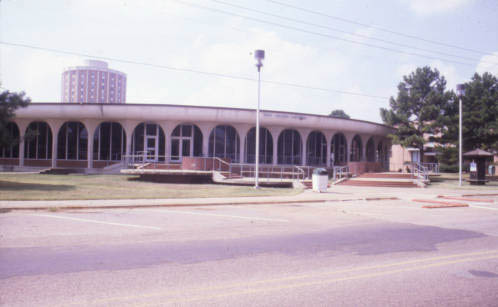
First Black student graduated from SFA
Willie Gene Whitaker became the first Black student to graduate from SFA. He received a master's degree in education.

Kerr Hall construction began
The residence hall was named after S.A. Kerr, a former SFA Board of Regents member.
Construction continued
Ferguson Building construction began and was dedicated in honor of Dr. T.E. Ferguson, former chair of the department of English and dean of faculty. Garner Hall construction began and was named after W.F. Garner, the first department head of SFA's history and political science department.

Miller Science Building opened
The building was named after Dr. E.L. Miller, dean of sciences and mathematics.

Kennedy Auditorium opened
In 1975, the Board of Regents named it Kennedy Auditorium in honor of Joseph W. Kennedy '35, an SFA alumnus with extraordinary achievements in the field of chemistry.
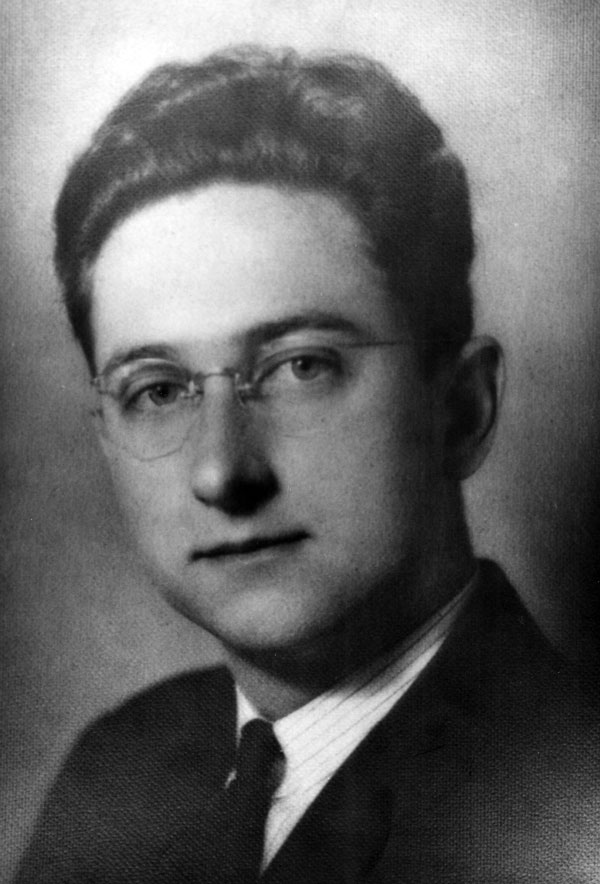
King's Men established
A few days after Martin Luther King's memorial service, Black students, faculty and staff members, and local citizens formed an organization at SFA in his memory to raise money for scholarships as well as work with the administration on the challenges Black students were facing at SFA. The King's Men produced the publication called the King's Review.

SFA became an independent university
Governor Preston Smith signed a bill giving SFA, Sam Houston State University, Southwest Texas University (now Texas State University), Sul Ross University and Angelo State University the status of "university." These were no longer colleges. Later the same year, the legislature approved a separate Board of Regents for SFA, transitioning the university out of the Texas State System. SFA changed its name to Stephen F. Austin State University.
A research center for agriculture
The agriculture research center was established. The facility was renamed the Todd Agricultural Research Center in honor of Walter C. Todd, an SFA agriculture alumnus who served on the SFA Board of Regents and was named a Distinguished Alumnus.
1970s
Students protested
As the Vietnam War continued, students held protests on campus. Student publications like the East Texas Free Voice were established.

Students protesting the Vietnam War in the free speech area Academic buildings continued to expand
Construction for the forestry and music buildings began. Later renamed the Wright Music Building, the music facility was named after Tom and Peggy Wright. Peggy worked in many roles at SFA after graduating from the university in 1944, among them as a member of the Board of Regents, SFASU Foundation trustee and Alumni Association Board of Directors member.

Homer Bryce Stadium constructed
The spirited 15,000-seat home field of the SFA Lumberjacks football team was constructed on the northeast side of campus. Bryce was a former student-athlete and Board of Regents member.

Art Studio opened
The Art Studio opened with offices and facilities for fine arts.
Library construction began
Construction began on the Ralph W. Steen Library, named after SFA's third president.
HPE Complex construction began
Norton HPE Complex construction began and was named after Dr. Lucille Norton, an avid advocate for women's intercollegiate athletics at SFA.
SFA made national headlines for streaking
Then president Dr. Ralph W. Steen allowed students to streak on campus for one night this year, March 6, without repercussions. Parents weren't amused.

McGee Business Building construction began
The building was named after R.E. McGee, a former Board of Regents member.

McKibben Education Building construction began
The building was named after Robert T. McKibben, first dean of education.

Fourth president was named
Dr. William R. Johnson was named the fourth president of SFA July 1.

Growth for the agriculture program
Agriculture Building construction began.
"Axe 'em, Jacks" hand sign created
Thanks to the school spirit of a small group of creative SFA cheerleaders, the university received its own signature hand sign.
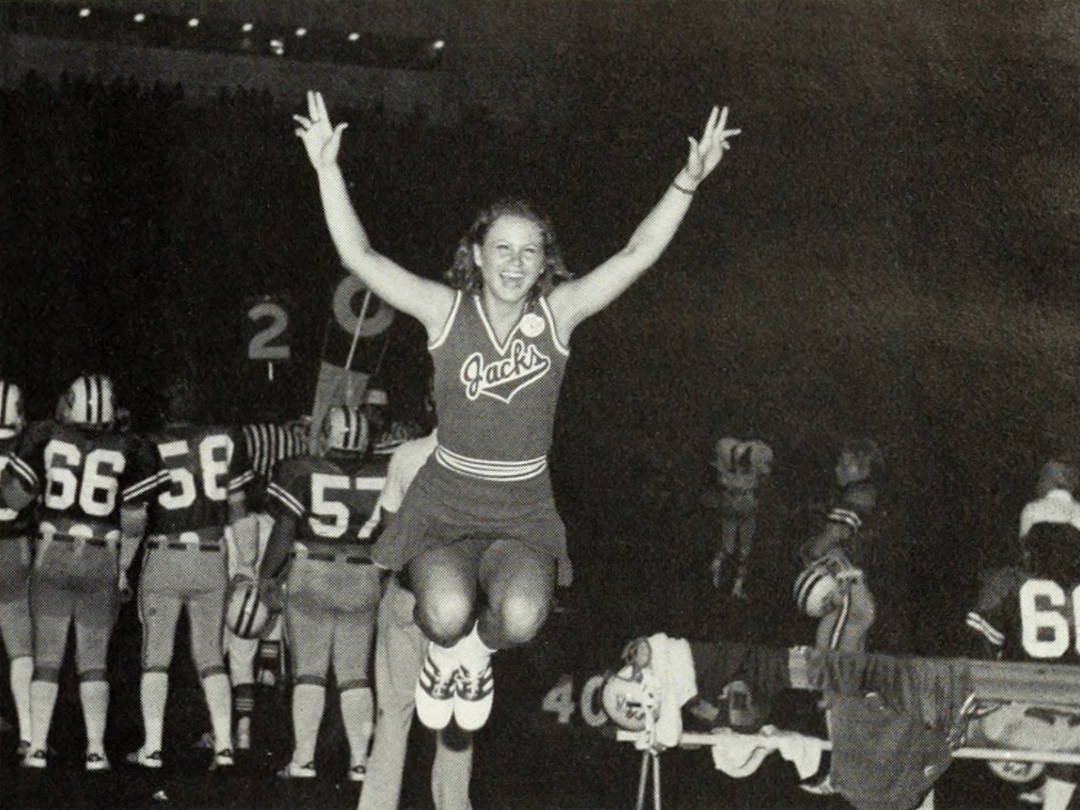
1980s
Johnson Coliseum hosted top acts
Little River Band and Poco, Chicago, Ronnie Milsap, Harlem Globetrotters, Cheap Trick, .38 Special, Eddie Money, Alabama, Willie Nelson, Huey Lewis and the News, Richard Marx and other entertainers and musicians performed at the Johnson Coliseum.
Mathematics building construction began
The building was later renamed the Bush Mathematical Sciences Building, after Roy E. '57 and Linda Bush. Roy graduated from SFA and worked in the oil and gas industry.

Observatory added
SFA physics and astronomy faculty members designed and constructed what was then and is still the largest student telescope on a Texas university campus, measuring 41 inches.

Dugas Liberal Arts North construction began
The building was named after Dr. Vera Lea Dugas, a former SFA history professor.

Hall 20 opened
Hall 20 was the first coed on-campus dormitory.
Stephen F. Austin statue unveiled
Due to a dramatic stance and flowing water, this iconic statue is affectionately nicknamed "Surfin' Steve." In 1983, the Student Government Association proposed the idea for a statue to commemorate the state's sesquicentennial celebration. From over 180 entries, Richard MacDonald's statue was chosen.
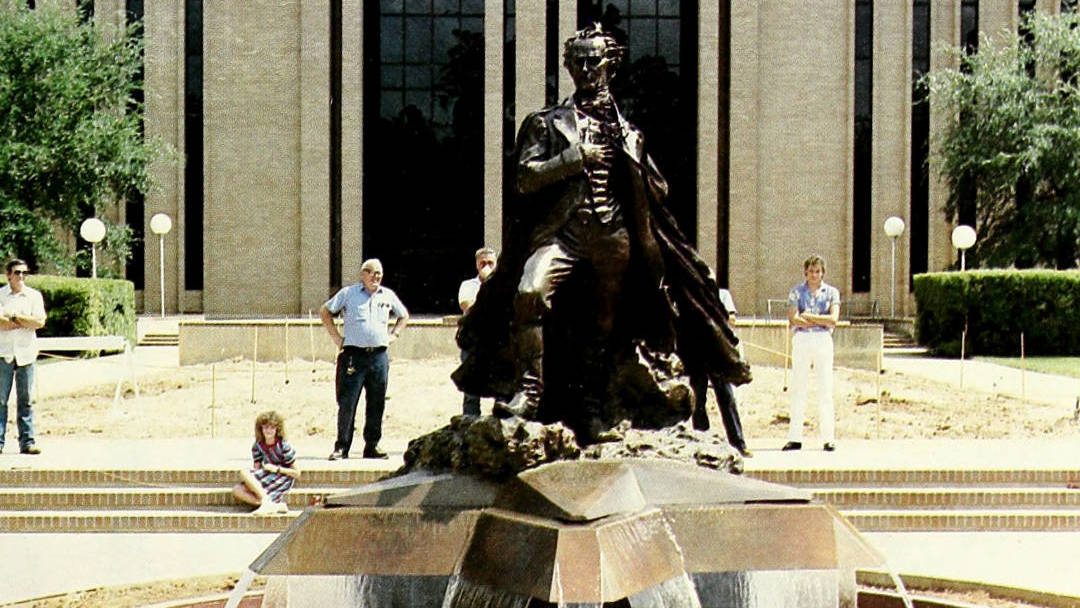
Softball national champs
Led by coach Dianne Baker, the Ladyjack softball team won the NCAA Division II Championship. Baker coached softball at SFA for 15 years.

Athletics nationally ranked
The football team is ranked No. 1 in the nation in NCAA Division 1-AA for the first time in SFA's history.
1990s
Important names in news and entertainment visited Nacogdoches
SFA and other venues around town hosted political figures Ann Richards, George H.W. Bush, Phil Gramm and George W. Bush; comedian Jay Leno; former Dallas Cowboys coach Tom Landry; and musical acts George Strait and Kwamé, Pearl Jam, The Nixons, Pam Tillis, Deep Blue Something, The Dave Mathews Band, Neil McCoy, Jack O'Pierce, Bryan White, Lit and Garbage among others.
Fifth university president named
Dr. Donald E. Bowen was appointed the fifth president of SFA March 26.

Sixth university president named
Dr. Dan Angel was appointed the sixth president of SFA June 16.

Coliseum renamed
The coliseum was renamed to William R. Johnson Coliseum in recognition of former university president Johnson's efforts to advance athletics.
Student volunteerism got a boost
As part of the university's 70th anniversary, SFA's first Sweat Equity Day was established, leading to a tradition of SFA involvement in community assistance projects. Today, students participate in several campuswide service programs, many of which benefit the local Nacogdoches community.

Ol' Cotton purchased
The university and its military science department purchase Ol' Cotton, the cannon fired at SFA football games, to help promote school spirit. The World War II-era 75-mm mountain howitzer is named for Ret. Lt. Gen. Orren R. "Cotton" Whiddon of Lufkin '55, the most senior military officer ever to have graduated from SFA and a longtime supporter of the university's military science program. At the time of his retirement in 1989, Whiddon was commanding general of the Second U.S. Army. His numerous awards and decorations include the Bronze Star, Meritorious Service, Defense Superior Service and Army Commendation medals. Whiddon was inducted into the SFA Alumni Hall of Fame in 1988.
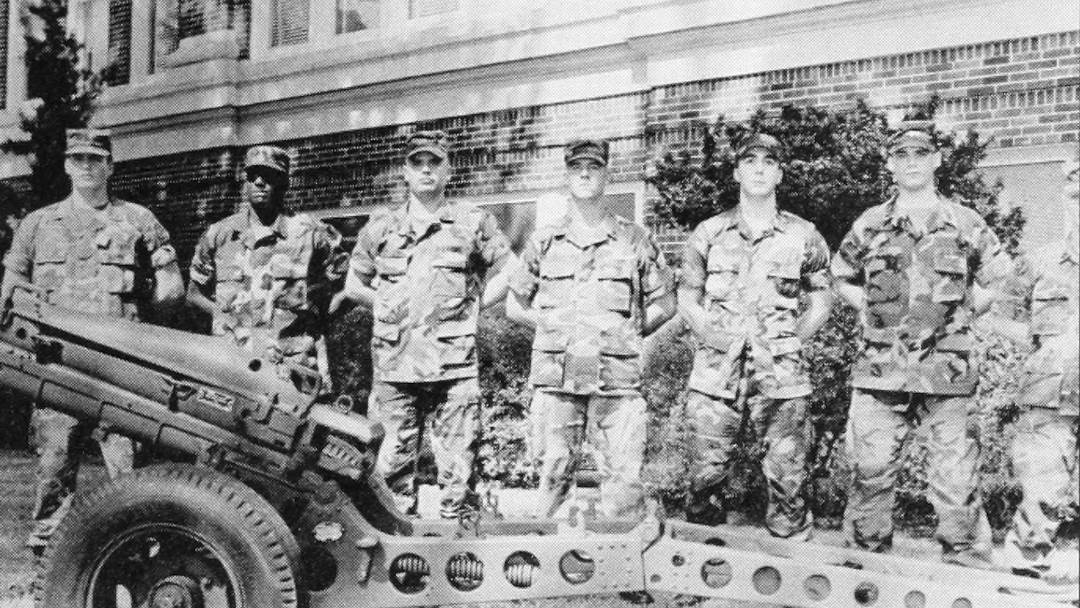
Wellness center construction began
The center was later named the Jimmy W. Murphy Wellness Center. Murphy graduated SFA in 1956 and, at the time of naming, was a member of the SFA Board of Regents.

Send it in an email
Email technology arrived on campus.
Registration moved online
Every office on campus had its own website, and in-person paper-based course registration moved out of the Norton HPE Complex and onto the internet.
First permanent endowment created
The campaign "Share the Legacy" gave the university its first permanent endowment. Approximately 3,500 alumni and private donors gave more than $37 million to aid the university in serving the educational needs of East Texas.
2000s
Seventh university president named
Dr. Tito Guerrero III was appointed the seventh president of SFA May 8.

Diversity prioritized
Under Dr. Tito Guerrero, the university's seventh president, enrollment pressures lessened as diversity increased and more Black, Hispanic and international students entered the institution than ever before.
The Big Dip tradition began
The Big Dip was started by the Student Foundation Association and was quickly considered a favorite SFA tradition.

Human Services Building construction
Construction began for the Human Services Building.
Space Shuttle Columbia disaster brought the world to East Texas
Several forestry, geospatial and geography professors, along with SFA geospatial students, designed a map of Space Shuttle Columbia's debris path within hours after the crash over East Texas. The map was used by NASA officials and the Nacogdoches County Emergency Operations Center to aid in the search and recovery effort.

Dr. Baker Pattillo becomes eighth university president
The Board of Regents named the first alumnus to serve as president — Dr. Baker Pattillo, a veteran SFA administrator for more than 40 years.

More residence halls built
Construction began on Lumberjack Lodge and Lumberjack Village residential buildings.
Milestone moment for diplomas awarded
The 100,000th diploma was awarded.
Student center reopened after renovations with new name
The College Center reopened after major construction updates and was named after Pattillo. The new additions to the Baker Pattillo Student Center included a movie theater, Starbucks, a dining hall and food court, as well as ample office spaces for student affairs and student organizations.
Student Recreation Center opened
The $24 million facility featured a 34-foot freestanding climbing wall, a 12,000-square-foot weight and fitness center, an outdoor center and pool with a lazy river, among many other features.

Schlief Tennis Complex opened
The facility was named after Gerald and Candace Schlief. Gerald, a 1970 SFA graduate, was a varsity tennis player and an ROTC cadet while at SFA.
Early Childhood Research Center became first of its kind
The facility featured an early childhood lab and the SFA Charter School. It was later named the Janice A. Pattillo Early Childhood Research Center to honor Dr. Janice A. Pattillo, former chair of the Department of Elementary Education and the university's first lady.

2010s
Garner Apartments demolished
What was once the tallest building in town was razed to make way for Lumberjack Landing. Purple victory lights were moved to the top of the Steen Hall towers.

Nursing complex opened North of town
The DeWitt School of Nursing Complex was named for Richard and Lucille DeWitt, who donated the land after it served as a distribution center for Kentucky Fried Chicken.

Archie McDonald Speaker Series hosted first guest
The Archie McDonald Speaker Series hosted its first guest, former professional boxer George Foreman. The series was created to honor McDonald's legacy as a distinguished scholar, educator, historical author and community commentator. He taught history at SFA for 48 years.

Lumberjack Landing residence hall included a student success center
Built on the site of the former Garner Apartments, the Lumberjack Landing coed residence hall opened. It was the first residence hall to also house a student success center with special academic programs, tutoring sessions, a computer lab and private study rooms.

Axe Handle tradition officially adopted
In 1927, the Sawyers — the first social club formed to promote school spirit — originated the axe handle tradition by decorating their axe handles with elaborate designs to represent their individual personalities. The Sawyers officially passed the axe handle tradition to SFA in 2012.

Brundrett Conservation Education Building opened.
The building was named for Ina Brundrett, a Tyler philanthropist who served on the SFA Gardens and Pineywoods Native Plant Center advising boards.

Nelson Rusche Distinguished Lecture Series hosted first guest
The Nelson Rusche Distinguished Lecture Series hosted its first guest, former Florida Gov. Jeb Bush. The series was created to honor the endowed gift Rusche '49 made for business student scholarships and support for other educational programs within the Rusche College of Business.

Ladyjack Bowling won NCAA National Championship
The Ladyjack Bowling team earned its first NCAA National Championship defeating defending national champion University of Nebraska.

Cole STEM Building opened
The building was named after Ed and Gwen Cole, longtime supporters of SFA.

Ladyjack Bowling won second NCAA National Championship
The Ladyjack Bowling team earned its second NCAA National Championship.
Ninth university president named
Dr. Scott Gordon was appointed as SFA's ninth president Aug. 19.
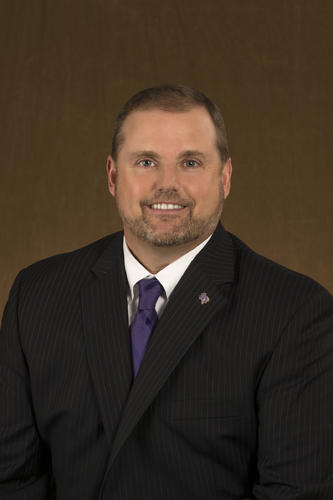
SFA beat Duke at home
Duke University, ranked No. 1 in the nation, had not lost at home to a non-conference opponent in 150 games.
2020s
Basketball facility expanded
The Naymola Basketball Performance Center was completed along with cosmetic changes to the Johnson Coliseum. It was named after Loddie Naymola '79, a business graduate and former SFA basketball player.
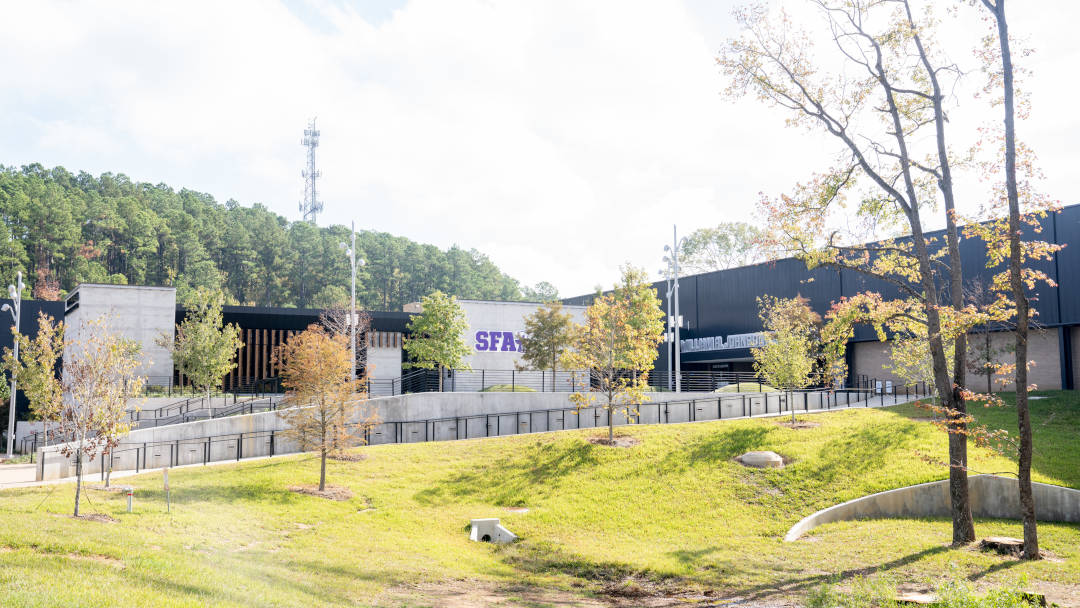
$8 million pledged to support fine arts scholarships
Bill Elliott, president of Elliott Electric Supply, honored his late wife, Micky, with a pledge of $8 million to support scholarships for fine arts students, and the college was renamed the Micky Elliott College of Fine Arts in her honor.

Dr. Steve Westbrook named SFA's 10th president
To honor his unwavering commitment to the university for more than 40 years, the SFA Board of Regents unanimously voted to appoint then-interim president Dr. Steve Westbrook '81 & '89 as the 10th president. This role went into effect Feb. 20, where he served until his retirement May 31.

First female to hold title of president at SFA
Gina Oglesbee '11 was named interim president of SFA June 1.

Griffith Fine Arts Building reopened
The building, closed in 2020 to undergo extensive upgrades and additions, reopened in time to welcome students for the fall semester.

SFA joins system
SFA joined The University of Texas System Sept. 1 after legislation unanimously passed both chambers of the Texas Legislature in April and Texas Gov. Greg Abbott signed the bill in May.

 Axe ’Em, Jacks!
Axe ’Em, Jacks!